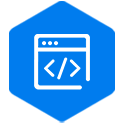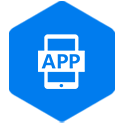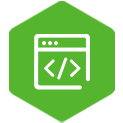
2023-04-18
APP development is a workflow that requires the collaboration of multiple people. Each person works at different stages, so meticulous and patient work is needed in every stage to ensure the development of a high-quality APP. Step 1: Requirements Analysis Stage** Gain an in-depth understanding of the characteristics of the target user group, such as age, gender, occupation, hobbies, and consumption habits. For example, if developing a fitness APP, the target users may be young people and office workers who focus on convenience and personalized fitness plans. In terms of usage, determine whether it will provide functions like fitness course teaching, exercise recording, or fitness social networking. Conduct market research and analysis on the advantages and disadvantages of similar APPs to accurately position your own APP. For instance, if it is found that the courses in existing fitness APPs are updated slowly, then fast updates of high-quality courses can be made a selling point of your own APP. Step 2: Sorting Out Functional Requirements** List in detail the core functions and additional functions required by the APP. Taking an e-commerce APP as an example, the core functions include product display, shopping cart, payment system, etc.; the additional functions can be product recommendations, user reviews, customer service system, etc. Prioritize the functions to ensure that the core functions are developed first to guarantee the basic usage experience of the APP. For example, for a news APP, the news browsing function must definitely be developed prior to the personalized skin setting function. Step 3: User Experience (UX) Design** Design a reasonable operation process to reduce the number of user operations. For example, in a ride-hailing APP, users should be able to quickly input their destinations and place orders after opening the APP, instead of having to go through complicated settings before starting to hail a ride. Provide a clear feedback mechanism. When users perform operations, such as clicking buttons or submitting forms, give them timely visual or auditory feedback. For example, a button will change color briefly or give a vibration feedback after being pressed. Step 4: UI Design Stage** Design the UI interface according to the targeted user group of the APP and their preferences. The layout should be clear so that users can quickly find the content they need. For example, place important buttons and information in prominent positions. For example, the post button of a social APP is usually in the center at the bottom of the screen. Pay attention to consistency, including aspects such as color matching, icon style, and font selection. For example, financial APPs usually adopt a solemn color combination like dark blue and white to give users a sense of reliability. Consider the adaptability to different device screen sizes to ensure that the APP can present a good visual effect on various devices such as mobile phones and tablets. Many APPs nowadays adopt responsive design and automatically adjust the layout according to the screen size. Step 5: Function Development Stage** Select development technologies according to the type of APP (such as native APP, hybrid APP, uniapp APP) and functional requirements. Native APPs are more suitable for applications with high performance requirements. For example, large 3D game APPs usually adopt native development; hybrid APPs can be compatible with multiple platforms simultaneously and have a relatively fast development speed, which are suitable for some applications with not particularly complex functions. Consider the stability and maintainability of the technology. Choose technology frameworks that are widely used and have good community support so that solutions can be quickly found when encountering problems. Step 6: APP Testing Stage** Conduct comprehensive tests on all functions of the APP to ensure that each function can operate normally as expected. Check the boundary conditions of the functions. For example, in a calculator APP, check whether the calculation function can still output correct results when very large or very small numbers are input. Test the functions of the APP under different network environments, such as 2G, 3G, 4G, Wi-Fi, etc., and check the data loading speed and whether the function responses are normal. For example, whether a video playback APP can reasonably adjust the playback quality to avoid lagging under low network speeds. Conduct performance tests to test the response time of the APP, including startup time, page loading time, etc. For example, if the startup time of a tool APP is too long, users may abandon using it. Evaluate the resource occupation situation of the APP, such as CPU usage and memory occupation. For APPs with excessive resource occupation, it will affect other functions of the device and may cause problems such as device overheating and fast power consumption. Check the performance of the APP under high concurrency situations. For example, when multiple people use the interactive function of a social APP simultaneously, check whether it will crash or respond slowly. Step 7: App Store Release Understand the release rules and review standards of different app stores (such as the Apple App Store and Android app stores). For example, the Apple App Store has relatively strict content review for APPs and requires that they should not contain content related to infringement, pornography, or violence. Prepare the materials required for release, including APP icons, application descriptions, screenshots, etc. The application description should accurately and concisely introduce the functions and features of the APP to attract users to download it; the screenshots should display the main interfaces and highlight functions of the APP. Step 8: Continuous Maintenance and Update Collect user feedback and promptly fix the problems and bugs that occur in the APP. Information can be collected through the evaluation system of the app store, user feedback channels, etc. For example, if users report that there is a problem with the login function, it should be quickly investigated and fixed. Regularly update the APP, add new functions, and optimize performance to maintain the competitiveness of the APP. For example, according to user needs and market changes, add a new payment method to an e-commerce APP or optimize the product recommendation algorithm. Okay, we are Yiyun Technology. Follow us. You need a reliable team.


2023-04-18


2023-04-18


2023-04-18


2023-04-18


2025-09-13


2025-08-13

Website Construction

Website Development

Website Design

Mini-program Development

WeChat Official Account Development

APP Development

Website Construction in Beijing

Website Development in Beijing

Website Development Company

Mini-program Development Company

WeChat Official Account Development in Beijing

APP Development Company